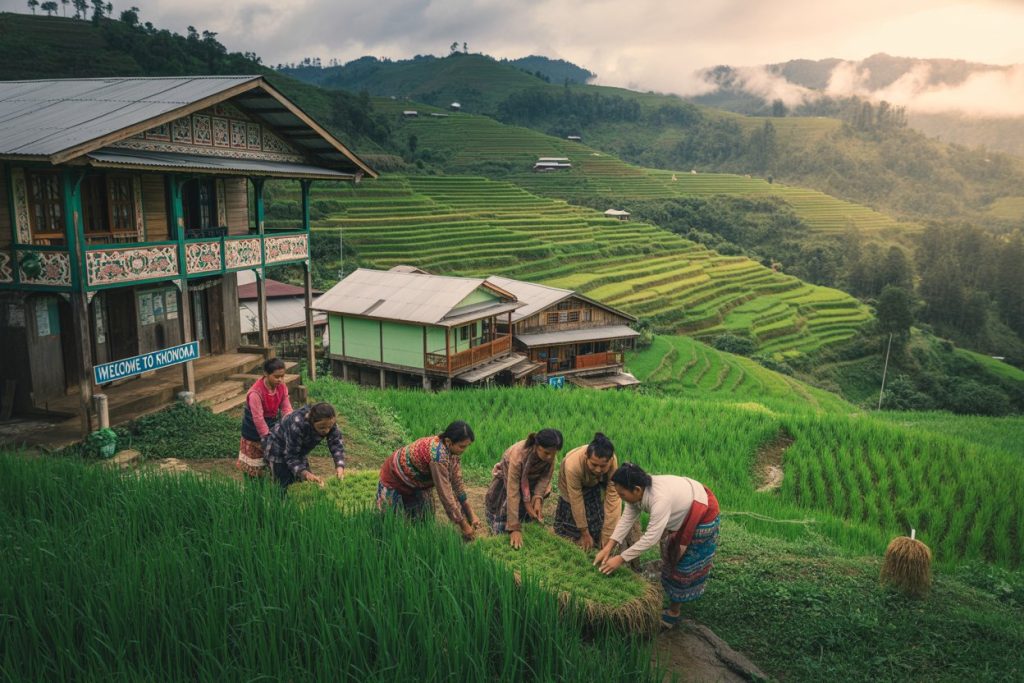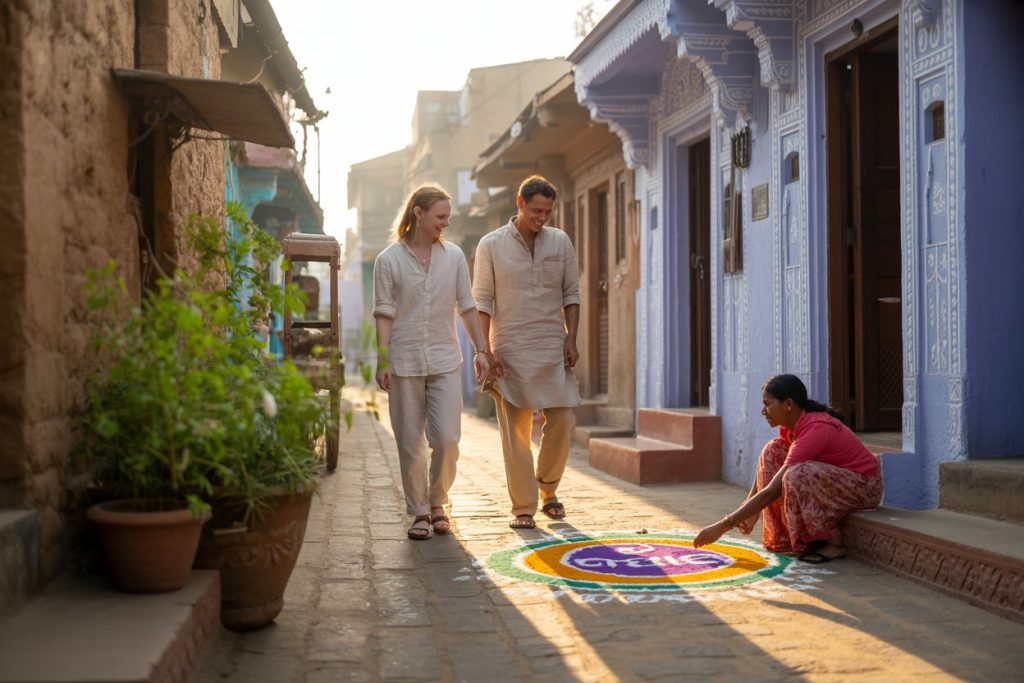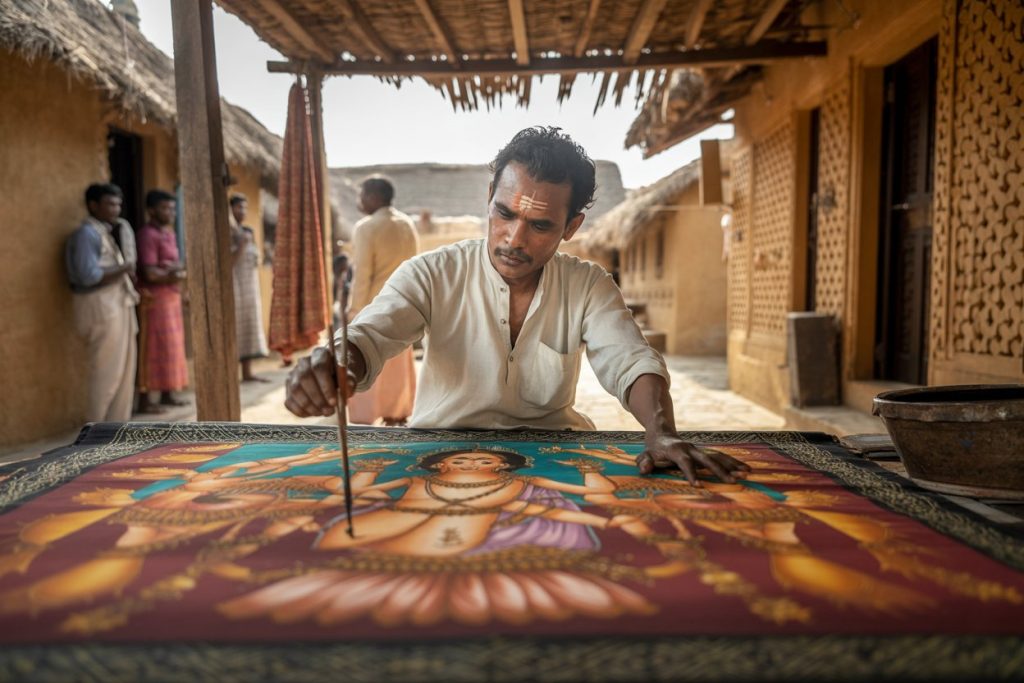
The Revival of Heritage Villages: Slow Travel Experiences in Rural India
In an era of hurried itineraries and Instagram-worthy snapshots, a growing number of travelers are discovering the profound satisfaction of slow travel through India’s heritage villages. This shift from fast tourism to meaningful, immersive stays represents more than just a travel trend – it’s a movement toward authentic cultural exchange that benefits both visitors and rural communities. Heritage village tourism offers weary urban souls a chance to reconnect with simpler rhythms of life while supporting the preservation of India’s rapidly disappearing traditional ways of living.
What Are Heritage Villages?
Heritage villages are carefully preserved or thoughtfully restored rural settlements that showcase India’s rich cultural legacy through their architecture, crafts, lifestyle, and traditions. Unlike tourist attractions frozen in time, these are living communities where residents continue their ancestral occupations while welcoming visitors into their daily lives.
These villages serve multiple purposes:
- Cultural Preservation: Maintaining traditional arts, crafts, and architectural styles that might otherwise vanish in the face of modernization
- Economic Sustainability: Providing alternative income sources for rural communities through tourism, craft sales, and cultural demonstrations
- Educational Value: Offering authentic insights into India’s diverse regional cultures, farming practices, and artisanal traditions
- Environmental Conservation: Promoting sustainable living practices and traditional ecological knowledge
Remarkable Heritage Village Examples Across India
India’s heritage village network spans diverse landscapes and cultures, each offering unique experiences:
- Raghurajpur, Odisha: Known as the crafts village of India, this artistic community specializes in Pattachitra paintings, palm leaf engravings, and traditional dance forms. Every household here practices some form of art, making it a living gallery where visitors can observe masters at work.
- Hodka, Kutch, Gujarat: This desert village showcases traditional Kutchi handicrafts, mud house architecture, and vibrant textile traditions. The community-run tourism initiative allows visitors to stay in traditional bhungas (circular mud houses) and participate in daily village activities.
- Pragpur, Himachal Pradesh: Recognized as India’s first heritage village, Pragpur preserves colonial-era architecture and traditional Himachali culture. The village features cobblestone streets, heritage havelis, and sustainable tourism practices that maintain its historic character.
- Chettinad, Tamil Nadu: Famous for its palatial mansions and distinctive cuisine, this region represents the prosperity of the Chettiar merchant community. Visitors can explore ornate architecture, learn traditional cooking techniques, and understand the cultural significance of these grand homes.
- Khonoma, Nagaland: This eco-village demonstrates successful conservation efforts and traditional Naga culture. Known for its terraced fields and community-based natural resource management, Khonoma offers insights into indigenous sustainability practices.

Why Modern Travelers Are Drawn to Village Experiences
The appeal of heritage village tourism extends far beyond curiosity about rural life:
- Authentic Cultural Immersion: Participate in daily activities like farming, cooking, and crafting rather than observing from a distance
- Handmade Craft Learning: Learn traditional skills directly from master artisans, from pottery and weaving to wood carving and metalwork
- Traditional Culinary Experiences: Enjoy home-cooked meals prepared with locally sourced ingredients using recipes passed down through generations
- Festival Participation: Witness and participate in local celebrations, religious ceremonies, and seasonal festivals that reveal community bonds
- Connection with Nature: Experience agricultural cycles, traditional farming methods, and the deep relationship between rural communities and their environment
Mental and Social Benefits of Village Tourism
Heritage village stays offer profound psychological and social advantages:
- Digital Detox and Mindfulness: Limited connectivity encourages present-moment awareness and reduces screen dependency, promoting mental clarity and stress reduction
- Community Connection: Genuine interactions with local families foster empathy, cultural understanding, and lasting friendships that transcend geographical boundaries
- Supporting Local Economies: Tourism revenue directly benefits rural communities, funding education, healthcare, and infrastructure improvements while encouraging young people to stay in their villages
- Personal Growth: Stepping outside comfort zones and adapting to simpler lifestyles builds resilience and appreciation for life’s essentials
Practical Tips for Heritage Village Travelers
- Booking and Planning: Research community-run tourism initiatives through organizations like India’s Ministry of Tourism or specialized heritage travel companies. Book in advance, especially during festival seasons
- Setting Expectations: Prepare for basic accommodations, shared facilities, and limited modern amenities. Embrace these as part of the authentic experience rather than inconveniences
- Cultural Respect: Learn basic local customs, dress modestly, and ask permission before photographing people or religious sites. Participate respectfully in community activities without being intrusive
- Language Preparation: Learn a few phrases in the local language or Hindi to show respect and facilitate better connections with villagers
- Pack Thoughtfully: Bring appropriate clothing for rural environments, personal toiletries, and small gifts for host families while avoiding items that might create dependency
Conclusion
The revival of heritage villages isn’t just about tourism – it’s about keeping India’s living traditions alive. These slow travel experiences offer something increasingly rare in our fast-paced world: the opportunity to pause, connect, and learn from communities that have maintained their cultural identity across centuries. By choosing heritage village stays, travelers become part of a larger movement that values sustainability, authenticity, and mutual cultural exchange over superficial sightseeing. In preserving these villages, we preserve not just buildings and crafts, but the wisdom, values, and ways of life that represent India’s true cultural wealth. This revival ensures that future generations will inherit not just stories about traditional India, but living, breathing communities where these traditions continue to thrive.


